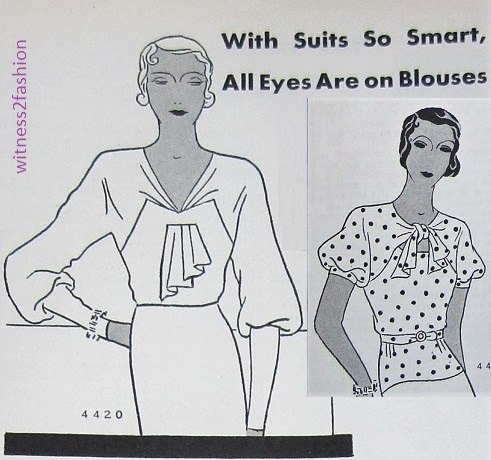
Two versions of the same blouse, Butterick 4420, from April 1932, Delineator.
These blouses from 1932 and 1933 continue to popularize the use of separates, possibly for office wear, possibly because a blouse is easier to launder in a wash-basin than a dress, and probably because a blouse takes less fabric. The ability to get several looks from the same two or three blouses and one or two skirts might be another attraction in the scarce-money days of the 1930’s.
A few of the blouses shown below, all from 1932 or 1933, plus two or three skirts or suits, would combine to make a really extensive wardrobe. The skirts of 1932 -1933 were long.
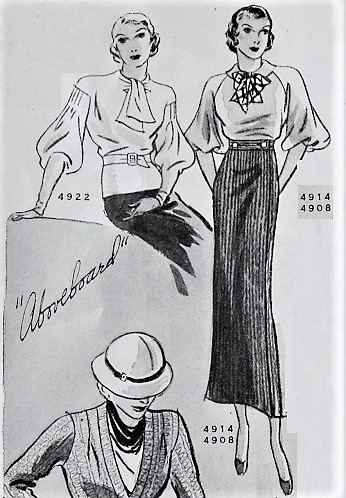
Here, two Butterick blouse patterns are shown with skirt 4908. February 1933, Delineator.
First, Butterick blouses and tops from 1932:
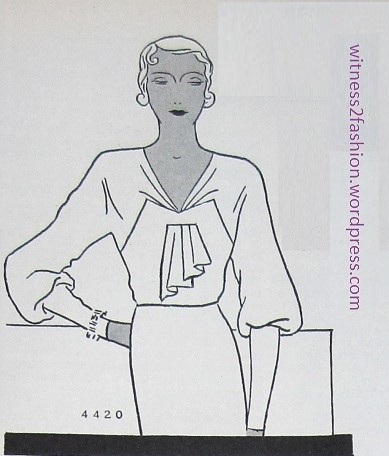
Butterick blouse 4420 was shown in long or short-sleeved versions. Delineator, April 1932.
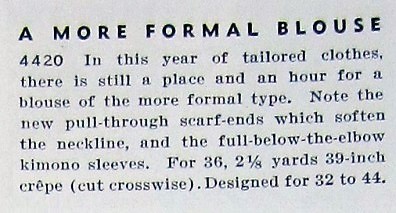
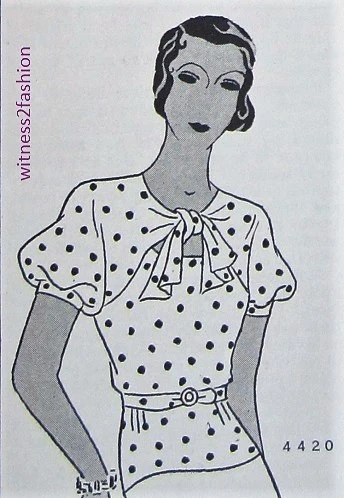
Butterick blouse 4420 in a more casual version, with short sleeves, a peek-a-boo front, and in dotted fabric. Notice the triple darts that shape the waist and control the fullness. Clever! [Did it have a side opening?] April 1932.
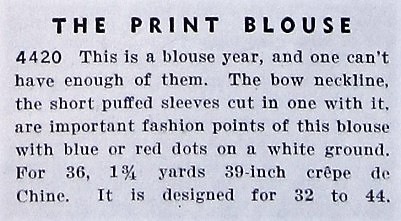
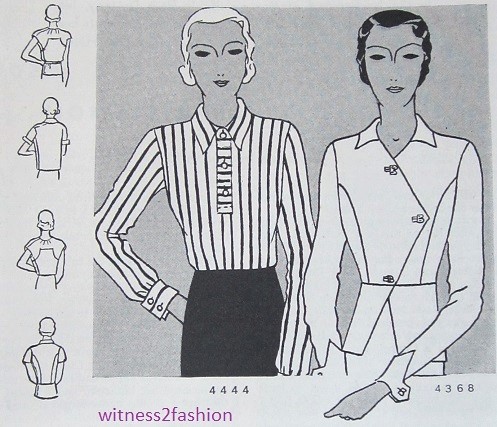
A more “strictly-business” attitude for Butterick 4444 and 4368. April 1932, Delineator. The striped blouse has a “shirtwaist front.” 4368 has a peplum.
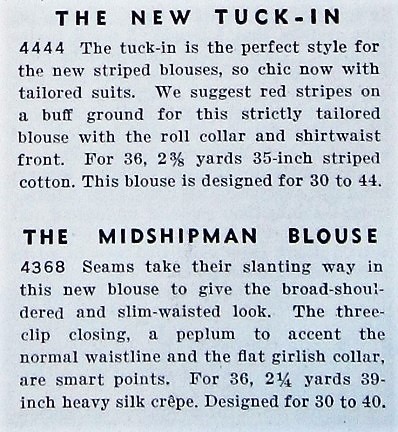
Although this next set of tops are called jackets, they are so brief they might be worn with skirts or beach pajamas.
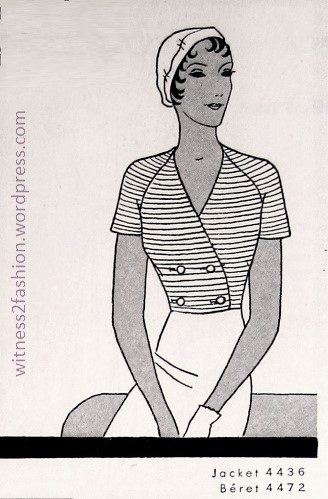
Butterick “bell-hop” jacket 4436, which comes only to the waist. April, 1932.
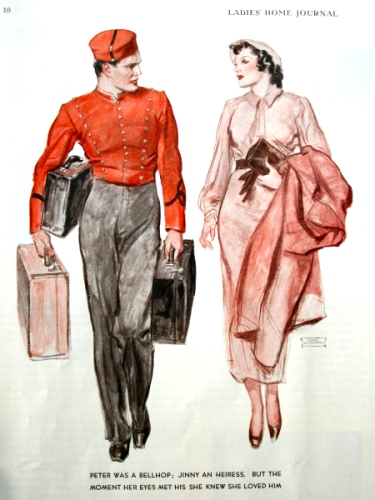
A young man wearing a bell-boy or bell-hop’s uniform. Story illustration, Ladies’ Home Journal, Jan. 1936.
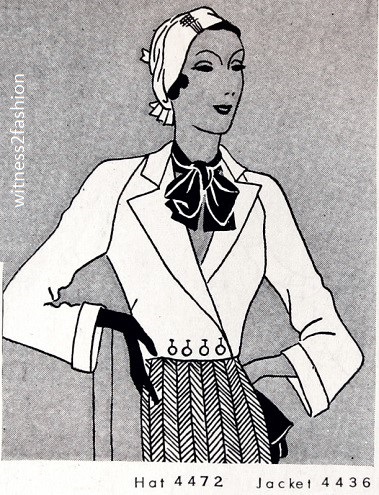
This version of the “bell-hop jacket” has “a strict, tailored air.” Butterick 4436, April 1932.
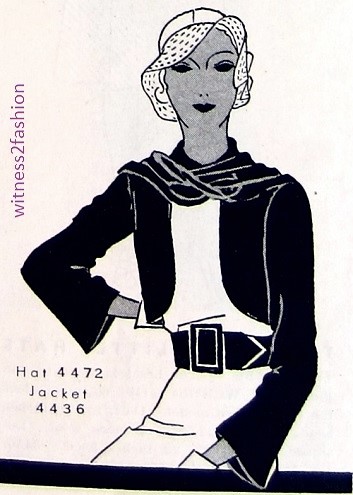
Jacket 4436 was available in a bolero version which “makes a blouse and skirt look like a frock and gives a frock a dress-up air.” 1932.
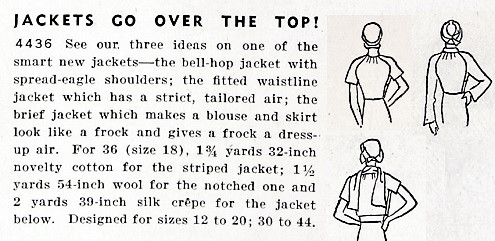
In case you noticed, three fabric hats made from Butterick pattern 4472 accompany the jacket illustrations.
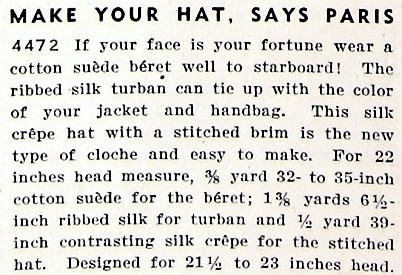
1933 was also a good year for blouses, beginning in January. All are Butterick patterns featured in Delineator magazine.
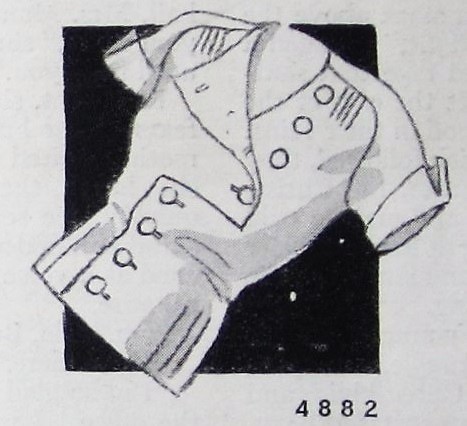
Butterick blouse 4882 looks complicated — I’d like to see the pattern pieces! It was also shown in two versions. January 1933. [Sorry about the fuzzy lines — it was a small illustration, not a hairy blouse.]
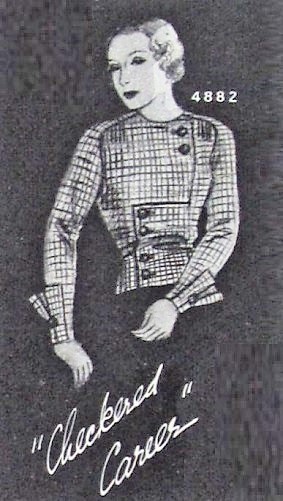
Butterick 4882 with long, fancy sleeves. January 1933.
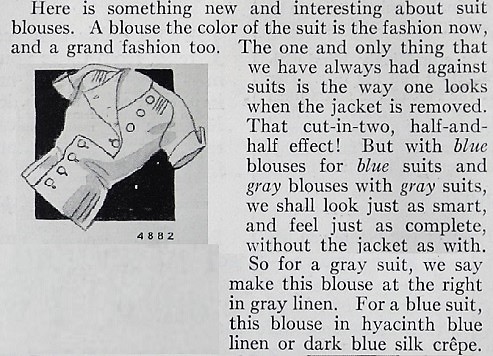
[In the interests of space and legibility, I moved the blouse illustration from right to left.] Match your skirt and blouse colors.

Two Butterick blouses for February, 1933. Left, pattern 4922 (“Aboveboard”); right, pattern 4914 (“Half and Half.”) Full sleeves with fitted lower portions — reminiscent of the 1890’s –were chic.
The February report on Paris Fashions says dressy blouse 4922 in “saffron yellow rough crepe” would look good “over any table, bridge or luncheon.” Blouse 4922 in “light gray lawn … with a schoolboy collar and tie” is paired with a dark gray wool wrap-around skirt, 4914.

The cover of Butterick Fashion Quarterly showed another short jacket, Butterick 4888, and a wonderful pair of button front beach pajamas, Butterick 3884.
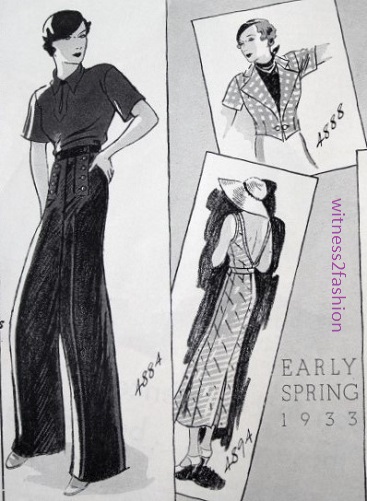
Detail from cover of Butterick Fashion Quarterly, from an ad in Delineator, February 1933.
Here is a clearer image of both, from Delineator, July 1933.
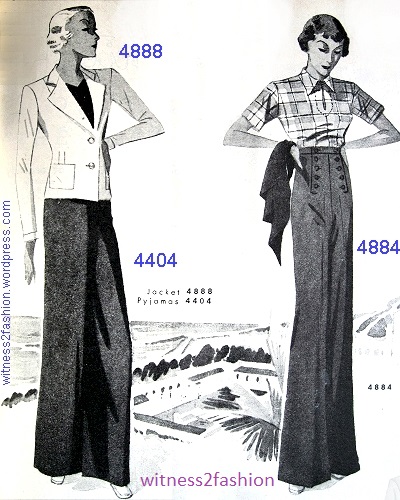
Resort wear: Butterick jacket 4888 in a longer version, and beach pajamas 4884 (right) and 4404 (left.) July 1933.
However, I’m getting ahead of myself; more blouses were shown in the April issue of Delineator:
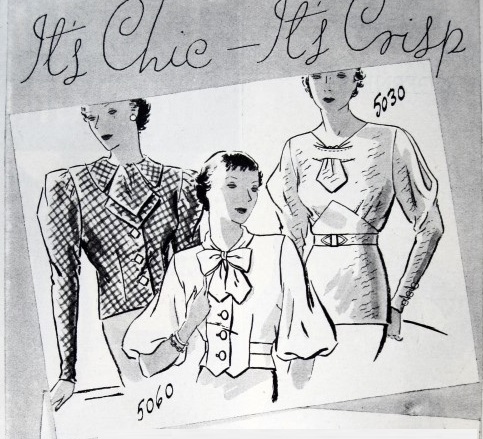
Butterick blouses 5060 and 5030. April 1933, page 86. 5030 has “cowl sleeves,” an expression I’ve never heard before. 5060 has a sort of built-in weskit or vest.
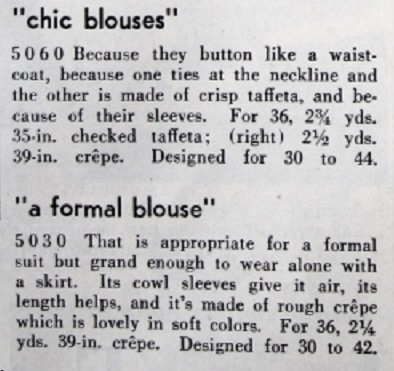
[Full at the top, fitted at the bottom: 1890’s sleeves.]
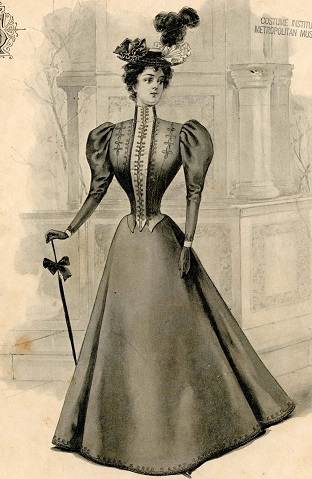
Metropolitan Museum Collection. Gigot or “leg of lamb” sleeves. 1890’s.
Digression: I’ve written before about the popularity of collars which could make one dress look like a wardrobe. On the same page was Butterick collar pattern 5072. Imagine these Depression Era collars transforming a simple dress or a sweater.
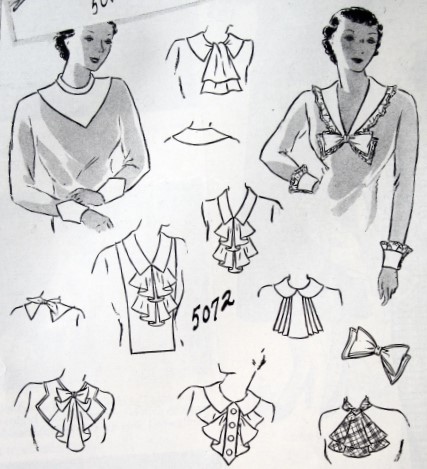
Butterick collar pattern 5072 — an inexpensive way to “boost morale.” Delineator, April, 1933, p. 36
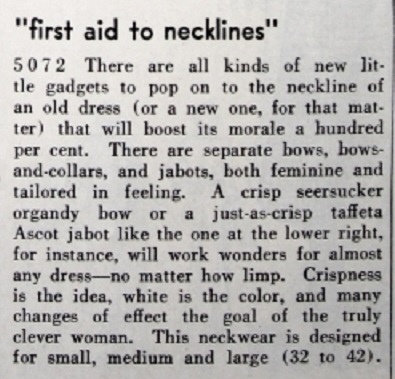
Some Thirties’ dress patterns even came with interchangeable collars.
Back to Blouses: In May, Delineator was writing about borrowing masculine styles for feminine clothing:
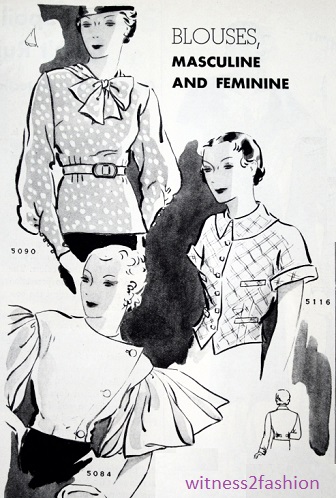
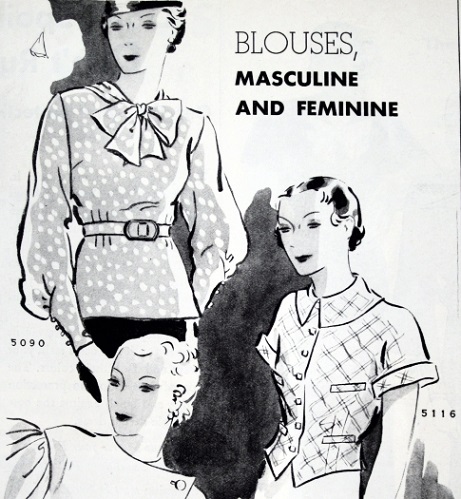
Left, Butterick blouse 5090; lower right, Blouse 5116. May 1933. Notice the little darts on 5090, insuring a neat waistline. 5116 is the first of many garments with the look of a man’s vest or weskit. “Note the square buttons.”
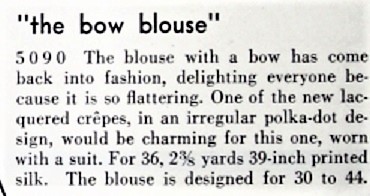
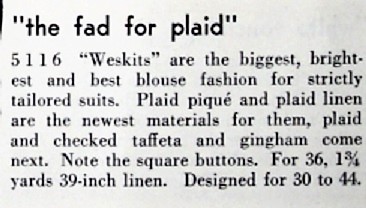
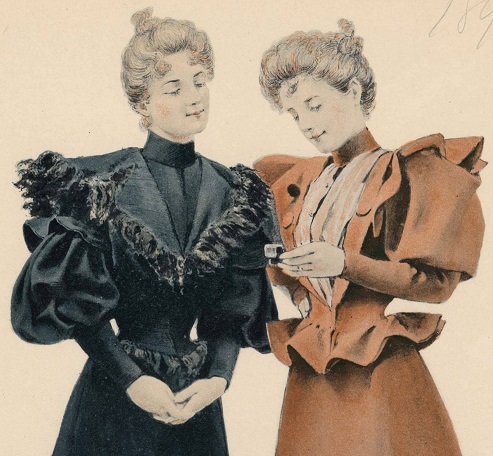
Sleeves, 1893. They are very full at the shoulder but tight on the lower arm. Met Museum fashion plate collection.
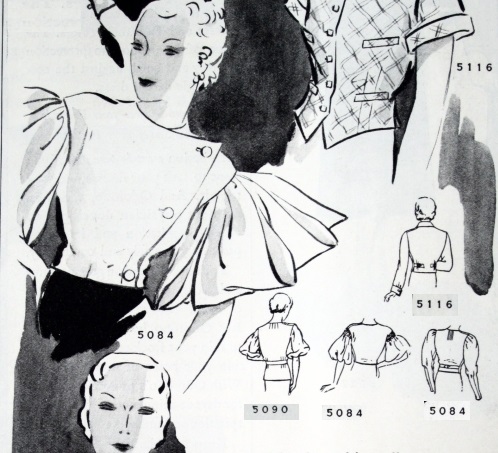
Blouse (jacket?) 5084 was shown in two versions. This one seems like a wild topper — in taffeta — for an evening skirt, a dark velvet one, perhaps. Below, it’s barely recognizable as the same pattern:
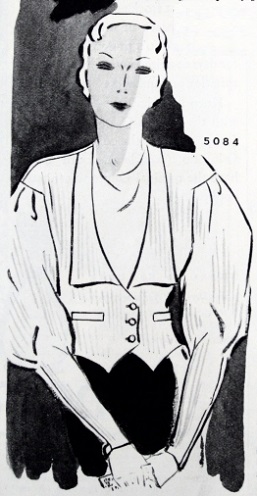
Butterick 5084 is both feminine, in the sleeves, and masculine, in its weskit, which is essentially a man’s formal white evening vest. It is worn over a blouse or dress. May 1933.
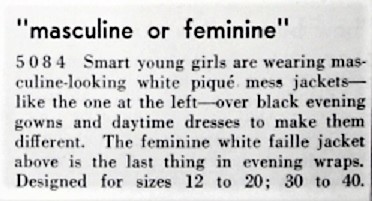
For men, there was a brief fad for short mess jackets — copied from the military — in 1934.
I’ll leave blouses from 1934 for another day.
